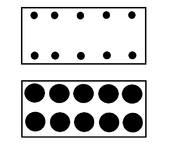JacksonAuto
15+ Year Contributor
- 753
- 128
- Nov 21, 2005
-
Hanover,
Maryland
But, while we're on the subject of cylinder head flex, hopefully you don't mind discussing it a bit. Is the flex issue typically heat related or pressure related? How much flex are we talking about? Have you guys ever implemented anything to combat it? Do you agree that a larger diameter stud could help?
Pressure, usually from detonation. We don't do anything out of the ordinary to combat it. Proper machining, assembly, parts combination and tuning take care of it. I disagree that larger studs will help. . Like I said before, you can use the biggest, baddest fastener you can find but it doesn't stop the head from flexing/lifting between the fastener points. The only thing that will help is to put more fasteners around each cylinder but there's no room for that.
There are situations where you'll never get it to seal up- like race setups with big boost. We'll run a filled block and a welded cylinder head deck in that case.




 I need to come hang out with you guys for just one week
I need to come hang out with you guys for just one week













